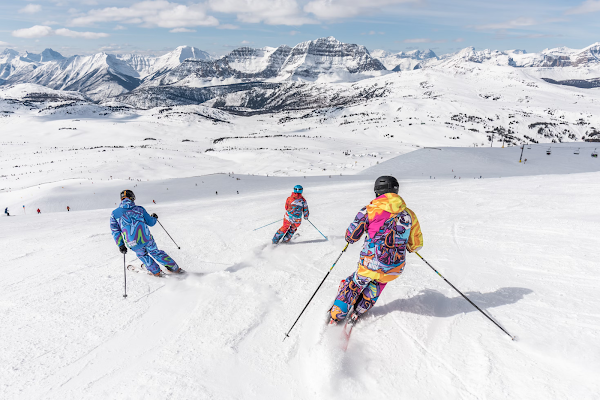The Ultimate Checklist for Buying New Ski Boots
Buying new ski boots can be an exciting yet daunting task. As one of the most crucial pieces of equipment for any skier, finding the perfect pair requires careful consideration and attention to detail. Ski boots not only impact your performance on the slopes but also play a significant role in your comfort and safety. Whether you're a seasoned veteran or a beginner hitting the slopes for the first time, having the right ski boots can make all the difference in your skiing experience. In this comprehensive guide, we'll walk you through the ultimate checklist for buying new ski boots, covering everything from fit and flex to customization and compatibility.
Understanding Your Feet and Skiing Style
Before diving into the world of ski boot shopping, it's essential to understand your feet and skiing style. No two feet are alike, and finding boots that cater to your specific foot shape and size is paramount for comfort and performance on the mountain. Start by determining your foot width, arch type, and any specific areas of concern such as bunions or previous injuries. Additionally, consider your skiing style and ability level. Are you a casual cruiser who enjoys leisurely runs down groomed trails, or are you an aggressive skier who seeks out steep terrain and deep powder? You can read more here for a more in-depth exploration of foot anatomy and how it relates to ski boot selection. Understanding these factors will help narrow down your options and steer you towards boots that are tailored to your individual needs and preferences.
Finding the Right Fit
Fit is perhaps the single most crucial aspect of buying ski boots. Ill-fitting boots can lead to discomfort, pain, and even injury, so getting the right fit is non-negotiable. When trying on ski boots, pay close attention to the overall comfort and snugness of the fit. Your toes should lightly brush the front of the boot when standing upright, with minimal movement when flexing your ankles. However, you don't want your toes to be cramped or curled, as this can lead to numbness and circulation issues. The boot should securely cradle your foot without causing any pressure points or hot spots.
Evaluating Flex and Performance
The flex rating of a ski boot refers to its stiffness and responsiveness, which directly impacts your skiing performance. Boots with a higher flex rating are stiffer and more responsive, ideal for advanced skiers who demand precision and control at high speeds. On the other hand, boots with a lower flex rating are softer and more forgiving, making them suitable for beginners or those who prefer a more relaxed skiing experience. When choosing the right flex for your ski boots, consider your skill level, skiing style, and terrain preferences. Keep in mind that flex ratings can vary between brands and models, so it's essential to try on different boots and assess how they feel on the slopes.
Customization Options
Today's ski boots offer a wide range of customization options to ensure a perfect fit and maximum comfort. From heat-moldable liners to adjustable buckles and straps, there are plenty of ways to tailor your boots to your unique foot shape and skiing style. Heat molding is a popular technique used to mold the inner liner of the boot to the contours of your foot, providing a custom fit that enhances comfort and performance. Additionally, many boots feature adjustable features such as canting, which allows you to align the boot's cuff to match the natural angle of your leg for improved balance and alignment.
Compatibility with Bindings and Skis
In addition to fit and performance, it's crucial to ensure that your ski boots are compatible with your bindings and skis. Ski boots come in various sole types, including Alpine (ISO 5355), GripWalk, and Touring (ISO 9523), each designed for specific binding systems and skiing disciplines. Before making a purchase, check the compatibility of your boots with your bindings to ensure a secure and reliable connection on the mountain. Similarly, consider the type of skiing you'll be doing and choose boots that are compatible with your ski setup. For example, if you plan on skiing primarily on-piste, opt for Alpine boots designed for groomed trails and high-speed performance.
Budget Considerations and Final Thoughts
When it comes to buying ski boots, budget considerations are always a factor. Ski boots can range from affordable entry-level options to high-end models packed with advanced features and technology. While it's tempting to splurge on the latest and greatest gear, it's essential to find a balance between performance and affordability that works for you. Consider your skiing goals, frequency of use, and budget constraints when choosing your ski boots, and prioritize features that are most important to your skiing experience.
Buying new ski boots is an investment in both your skiing performance and overall enjoyment on the mountain. By following this ultimate checklist, you can ensure that you find the perfect pair of boots that fit like a glove, enhance your performance, and keep you comfortable all day long. Remember to prioritize fit, evaluate flex and performance, explore customization options, consider compatibility with bindings and skis, and stay mindful of your budget.





.png)



No comments
Thank you for dropping by! I would love to hear what you thought. :)
Thanks!
♥,
Diana